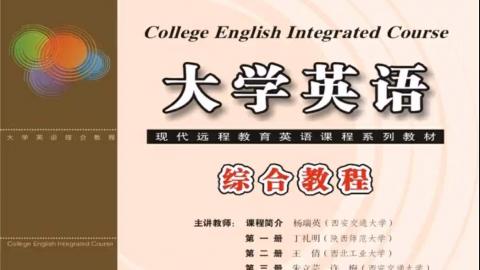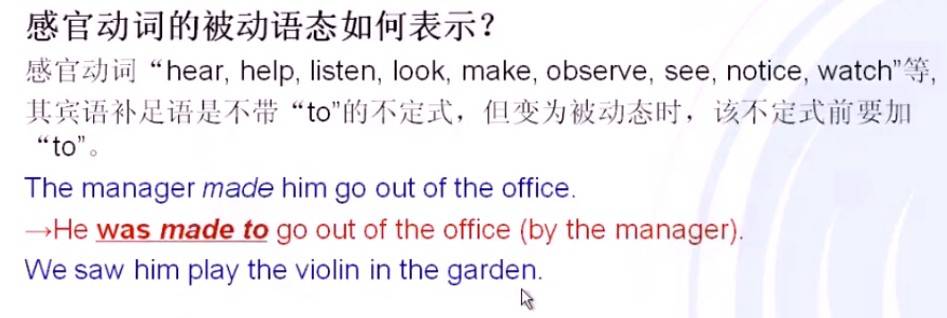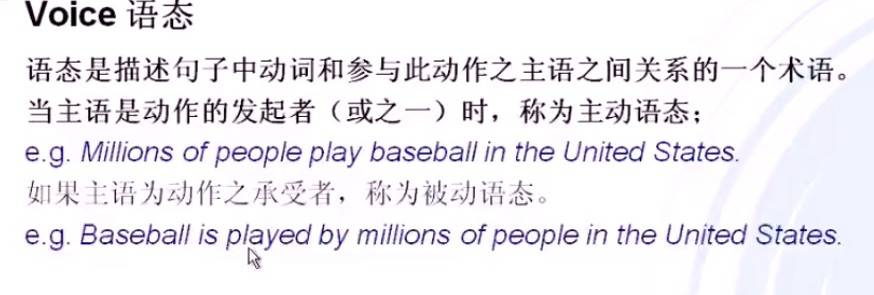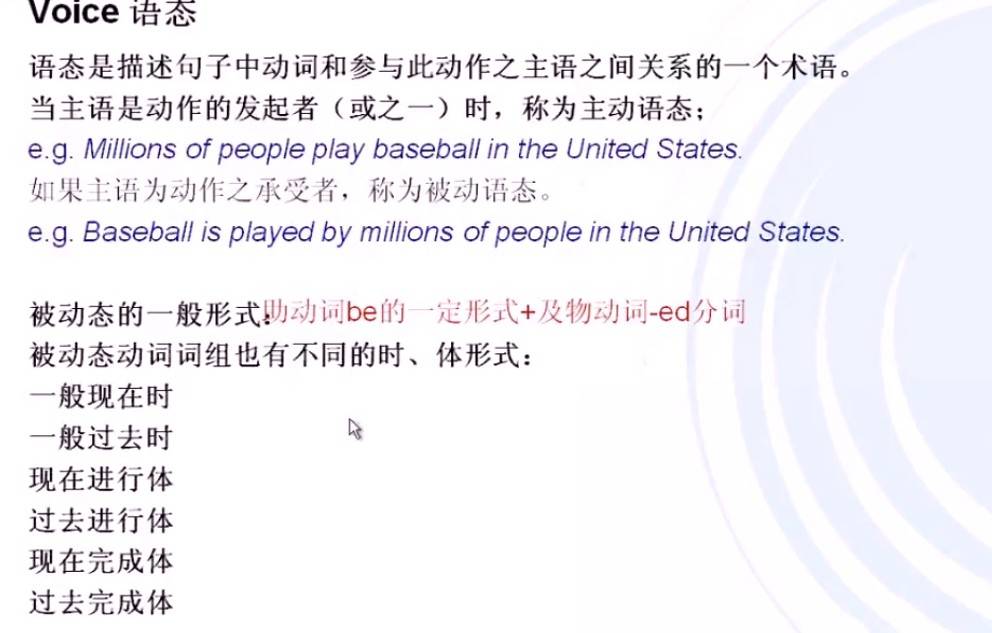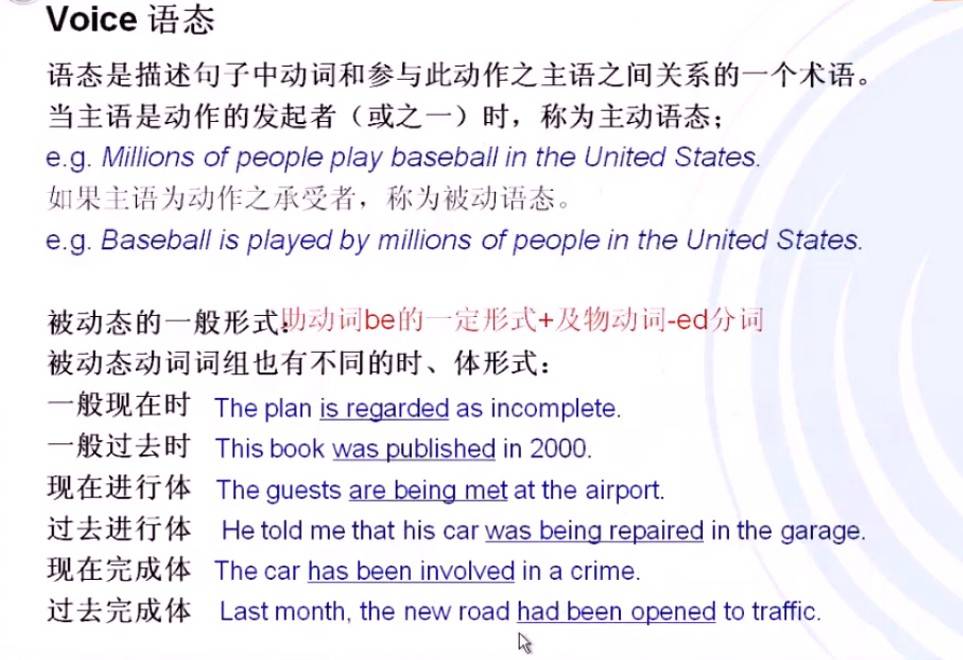get型被动态:get+done=be done
exercise
rise是不及物动词
need doing=need to be done
语态是描述句子中动词和参与此之主语之间关系的一个术语。
感官动词被动态前面加To
He was made to go out of the offic
短语动词的被动语态
不可丢掉后面的介词
被动态的使用场合
1.句子中心放在事件本身而不必提到施动者
Eight hours per day for sleep must be guaranteed.
2.不知道谁是施动者或不愿说出施动者
The book was published in the 16th century.
3.为了强调施动者
Who invented the telephone?
It was invented by Graham Bell.
4.根据上下文和语境需要
The flowers are all gone. What happened to the flowers?
a. The rain destroyed the flowers.
b. They were destroyed by the rain.
主动结构表示被动意义
既可以作及物动词也可以作不及物动词
wash clean cook iron look cut sell build read wear feel draw write sell drive
1.This book sells well.
2.Damp clothes iron easily/
3.This poem reads well.
4.The window won,t shut
need doing =need to be done
-Did you go to the show last night?
-Yeah.Every boy and girl in the area was invited.
| baseball | 英[ˈbeɪsbɔːl] | 美[ˈbeɪsbɔːl] |
| n. | 棒球运动; 棒球; |
| observe | 英[əbˈzɜːv] | 美[əbˈzɜːrv] |
| v. | 看到; 注意到; 观察到; 观察; 注视; 监视; 说话; 评论; 遵守(规则、法律等); 庆祝; |
wash,clean,cook,iron,look,cut,sell,build,read,wear,feel,draw,write,sell,drive------------可及物,也可不及物,不及物时,往往含有被动意义
damp clothes 潮湿的衣服
attack and rob 抢劫
-----------petrol 汽油
被动句使用场合 都是根据上下文 强调被动者
语态
很好,老师讲的很棒
get 的被动语态getdone=bedone
needdoing=need to be done
语态
语态是描述句子中动词和参与此动作之主语之间关系的一个术语。当主语是动作的发起者(或之一)时,称为主动语态。
被动态的一般形式:
助动词be的一定形式+及物动词-ed形式
被动态动词组也有不同的时,体形式:
感官动词的被动语态表示:
1.感官动词:hear;help;listen;look;make;observe;see,notice;
watch等,其宾语补足语不带"to"的不定式,但其变为被动态时,该不定式前需要加"to".
the manager made him go out of the office.
He was made to go out of the office(by the m)
we saw him play the violin in the garden.
he was seen to play the violin in the garden.
2.短语动词的被动语态表示:
当短语动词用作及物动词时一般都可以变为被动态。这时短语动词时一个整体,不可丢掉后面的介词或副词。
The children were well looked after.
the sports meet is put off.
3.被动态的使用场合:
A.把句子的语义重心放在事件本身而不必提到施动者时;
Hundreds of passengers were killed in the crash.
B.不知道施动者是谁,或不愿说出施动者时。
C.为了强调施动者,如果让他出现在主语的位置上不能受到应有的强调时,常用by-的被动句。
D.根据上下文和语境的需要。
4.主动结构表示被动意义
英语中有些动词能以主动结构表示被动意义。这类动词通常都是即可以作及物动词,也可以作不及物动词,当它们作为不及物动词时,往往含有被动意义,如,wash,clean,cook,iron,look,cut,sell,build,read,wear,feel,draw,write,sell,drive".这类句子的主语通常具有某些内在的特征,能够使动词所表示的动作得以实现或难以实现。
- ing分词的被动态的构成为:Being+-ed分词,
完成体形式为:having been+-ed分词。
Need doing=need to be done
Voice语态
语态
语态是描述句子中动词和参与此动作之主语之间关系的一个术语。当主语是动作的发起者(或之一)时,称为主动语态。
被动态的一般形式:
助动词be的一定形式+及物动词-ed形式
被动态动词组也有不同的时,体形式:
感官动词的被动语态表示:
1.感官动词:hear;help;listen;look;make;observe;see,notice;
watch等,其宾语补足语不带"to"的不定式,但其变为被动态时,该不定式前需要加"to".
the manager made him go out of the office.
He was made to go out of the office(by the m)
we saw him play the violin in the garden.
he was seen to play the violin in the garden.
2.短语动词的被动语态表示:
当短语动词用作及物动词时一般都可以变为被动态。这时短语动词时一个整体,不可丢掉后面的介词或副词。
The children were well looked after.
the sports meet is put off.
3.被动态的使用场合:
A.把句子的语义重心放在事件本身而不必提到施动者时;
Hundreds of passengers were killed in the crash.
B.不知道施动者是谁,或不愿说出施动者时。
C.为了强调施动者,如果让他出现在主语的位置上不能受到应有的强调时,常用by-的被动句。
D.根据上下文和语境的需要。
4.主动结构表示被动意义
英语中有些动词能以主动结构表示被动意义。这类动词通常都是即可以作及物动词,也可以作不及物动词,当它们作为不及物动词时,往往含有被动意义,如,wash,clean,cook,iron,look,cut,sell,build,read,wear,feel,draw,write,sell,drive".这类句子的主语通常具有某些内在的特征,能够使动词所表示的动作得以实现或难以实现。
- ing分词的被动态的构成为:Being+-ed分词,
完成体形式为:having been+-ed分词。
Need doing=need to be done
Voice语态
主动语态
被动语态
一般形式
被动语态的不同时、体形式
一般现在时
一般过去时
现在进行时
过去完成时
现在完成时
过去完成时
感官动词的被动语态
hear help listen look make observe see notice watch
其宾补要加不等式“to”
使用被动态:
1,把句子的语义重点放在事件本身而不必提到施动者。
2,英语是句尾焦点,强调部分可以放句尾。
3,不知道施动者是谁。
need doing =need to be done
rise是不及物动词
The book was published in 2000
语态:
描述动词和参与动作的主语之间的一个术语。
1.当主语是动作的发起者之一时,成为称为主动语态。
Millions of people play baseball in the United Sates.
2.主语为动作的承受者,称为被动语态。
助动词be的一定形式+及物动词ed形式
2.1被动语态中 感官动词前要加“to”
感官动词‘hear,help,listen,look,make,observe,see,notice,watch'等
eg.He was seen to play the violin in the garden.
2.2短语动词的被动语态
2.3 主动结构表示被动意义
有些动词能以主动结构表示被动意义,这类动词通常可做及物动词又可作不及物动词。当他们作不及物动词时,往往具有被动意义。如“wash clean cook iron look cut sell build real wear feel draw write sell drive等
2.4-ing分词的被动语态的构成为:being+-ed分词,其完成体形式为:having been+-ed分词
词语形式:
need doing=need to be done
m
当主语是动作的发起者称为主动语态
当主语为动作的承受着称为被动语态
被动态一般形式为 be的一定形式+及物动词
一般现在过去 现在进行 过去进行 现在完成 过去完成
